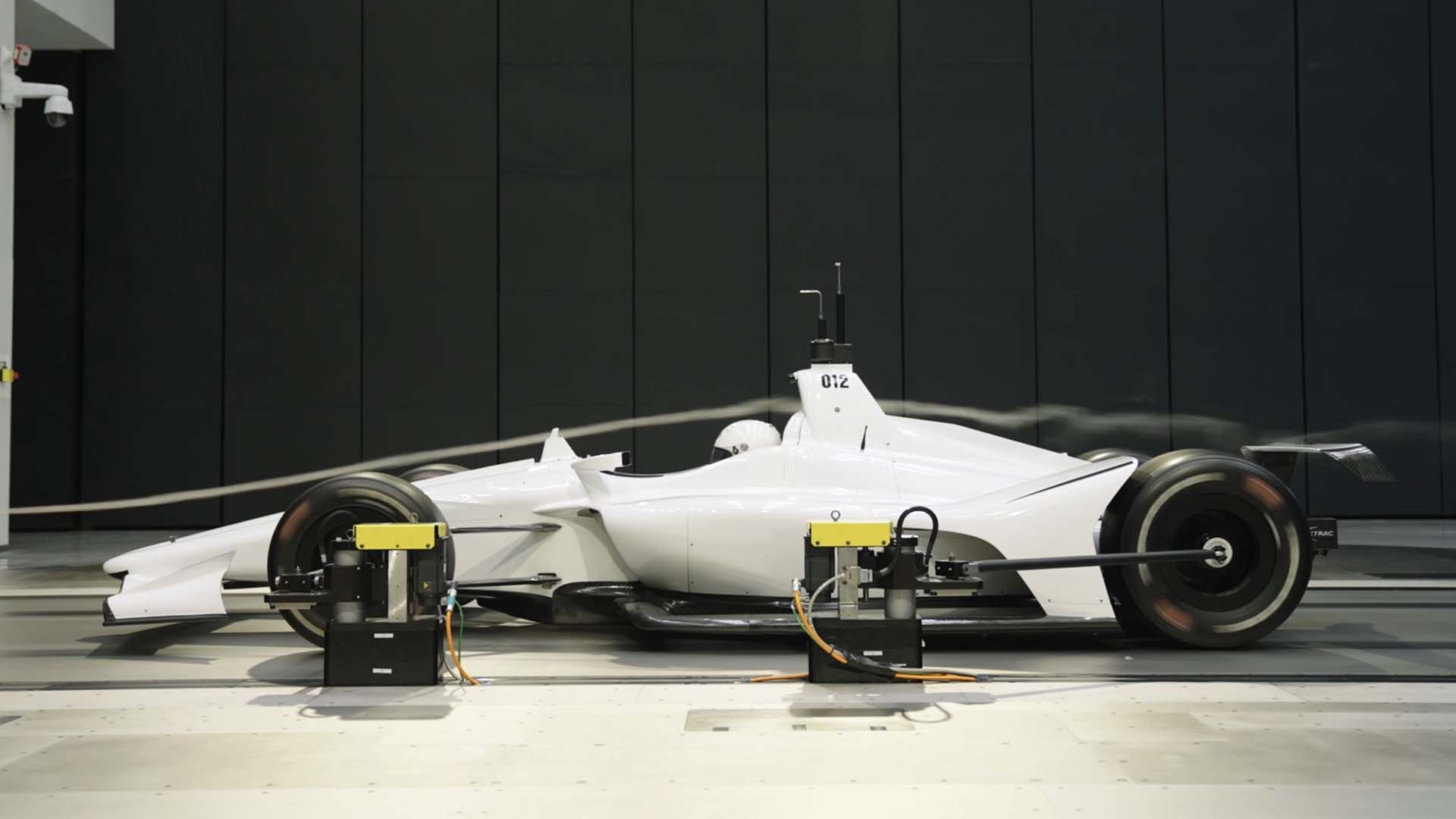

The ribbon has been cut at one of the most advanced aerodynamic research facilities in the world: Honda’s new wind tunnel at its Transportation Research Center in East Liberty, Ohio. The facility itself is officially called the Honda Automotive Laboratories of Ohio, or HALO, and it’s the automaker’s first full-scale wind tunnel in the United States. Completed at an expense of $124 million, it’s capable of wind speeds nearing 200 miles per hour, enabling the research of both racing cars and more conventional roadgoing machines. Along with its very big, very powerful fan, it also has a slew of modular technology enabling it to test a wide variety of vehicles in all kinds of conditions.
Honda says the tunnel is a very important feature of the brand’s electric future, where aerodynamics will play an even larger role in vehicle development. As such, the tunnel is designed not only to help optimize automobile shapes to reduce drag but also to measure a car’s acoustic signature. It can do all of this at a range of temperatures as well. Thanks to a massive heat exchanger, air temperatures from 50 to 122 degrees Fahrenheit can be achieved during testing.
The driving force behind this facility is a roughly 26-foot diameter fan powered by a 6,700-horsepower electric motor. Twelve massive carbon fiber blades accelerate the air to the extreme velocity listed above at 250 revolutions per minute. That may not sound very fast, but it’s an extreme rotational speed for a fan of that size, hence the unbelievable amount of power needed to spin it up.




Indeed, such wind speeds or power usage may seem excessive, but a full-scale wind tunnel like this one is an invaluable tool that Honda says will actually save it money in the long run. Previously, vehicles developed by the automaker’s North American team might’ve had to be shipped all the way back to Japan to undergo aerodynamic testing. This was not only expensive but it considerably extended development time. Indeed, time is really the key here. This new facility is located in a more convenient location, and since it’s a full-scale tunnel, it’s far easier to test a vehicle without having to wait for a scale model to be developed, or for a test vehicle to be shipped abroad.
Just as time is vital, so is data quality, and this new facility is brimming with special equipment and sensors to ensure that the automaker’s engineers—or anyone else who has purchased time at the tunnel—are getting the best results possible. Two conveyer belt layouts provide simulated rolling roads for vehicles with varying configurations, and an array of 556 microphones—54 mounted to the interior and 502 mounted around the vehicle’s exterior—give detailed acoustic data that helps inform passenger comfort and aerodynamic performance. In an era where the drone of combustion engines is going away, the Honda engineers running the new HALO facility indicated a slight wind buffet might be something that can really get on passengers’ nerves.




What about computers, though? How is it possible to justify a 110,000-square foot, eighth-mile-long aerodynamic research facility at a time when computational flow dynamics, or CFD, is so good? Well, Honda engineers explained that simulating everything is not so simple. Computers need data from real-world testing to provide accurate simulations, and tunnels like HALO provide it like Honda never has been seen before. Information about airflow at a variety of temperatures and speeds can now be fed into this software to improve it, and while this makes CFD an ever-more valuable tool—especially for smaller companies who cannot afford time at a wind tunnel—it justifies the existence of advanced wind tunnels as well. Nothing beats real-world data.
The automaker says its own road cars, as well as vehicles from other manufacturers and race cars, will be tested at the facility. HALO has four secure customer bays to make it easy for other engineering organizations to utilize its tunnel. This, in addition to the speed at which the various conveyor belts and sensors can be reconfigured, makes it a valuable tool in the coming era of efficiency and electrification.
Plus, because Honda is launching this tunnel, we get even more pictures of people in white jumpsuits holding that mesmerizing smoke wand, too. Where can I get one of those? And don’t tell me to get back into vaping.

Got a tip or question for the author? You can reach them here: peter@thedrive.com